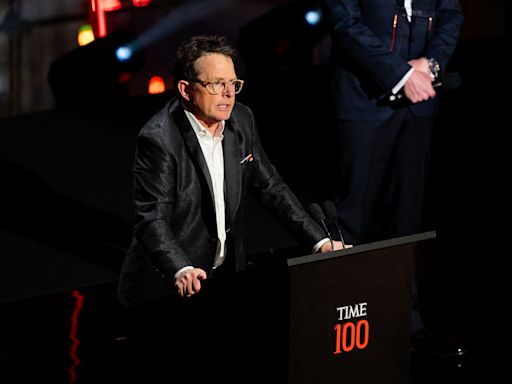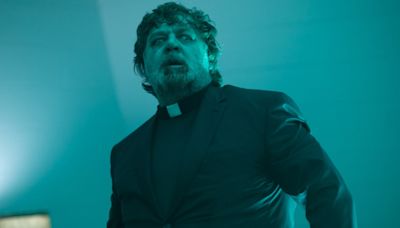Search results
People also ask
How to make a movie?
What is film production?
How many ways do you make a film?
How to make a good movie?
Get started. The three phases of moviemaking. Whether you want to make a low-budget short film or Hollywood feature, you can break down the process of making your own movie into three major phases: pre-production, production, and post-production.
Mar 31, 2024 · Stages of film production. Others will simply refer to the three stages of Pre-Production, Production, and Post-Production. But many film scholars divide the film creation process into a broader three stages of production — Production, Distribution, and Exhibition.
- Overview
- Writing the Movie
- Creating the Logline and Treatment of the Script
- Budgeting and Financing the Movie
- Getting the Cast and Crew
- Supervising the Film Shoot
- Preparing to Write the Movie
- Sample Script and Outline
Writing and producing a movie can be quite the challenge, especially if you are new to filmmaking. Creating an original motion picture requires a unique vision, detailed planning, and hard work. Start by writing a
that is engaging for viewers. Then, produce the movie by making a budget and getting financing. You will also need to find the cast and crew and supervise the movie production to ensure it runs smoothly.
The script outline is a guide that includes a rough idea of the number of scenes in the movie. Most feature length scripts have 50-70 scenes and run about 100-120 pages long. They usually have three acts that include:
Act 1: This is where you introduce the setting, characters, and inciting incident. The inciting incident is the event that gets your protagonist going and motivated to act. Act 1 is about 30 pages long.
Act 2: This is where your protagonist identified her goal or desire and encounters obstacles that make it difficult for her to achieve her goal. It contains the bulk of the story, full of urgency and tension. Act 2 is usually about 60 pages long.
Act 3: This includes the story’s climax, where the tension is highest as the protagonist tries to achieve her goal. There is also a clear ending, where the protagonist gets what she wants or fails to achieve her goal. Act 3 is usually 20-30 pages long.
The logline is a one sentence summary of the movie. It should contain your protagonist (a hero or heroine), an antagonist (a villain or anti-hero), and a goal that motivates your protagonist. Having a logline will help you stay focused when writing and stay on track. It is also useful as a marketing tool when you are producing the movie and trying to get it made.
The logline should not use the names of the characters. Instead, it should use descriptions of the characters that tell the reader something about them.
For example, you may have a logline like: “An Arkansas waitress and a housewife shoot a rapist and take off in a '66 Thunderbird.”
The treatment will give financiers and studio executives a clear picture of the movie, and help them decide if it is worth their money. The treatment is a two to five page summary that breaks out the movie into three acts. It will include the title of the film and the logline.
Most producers will hire a line producer or a production manager to prepare a budget for the movie. If you do not have access to a line producer, you will need to make the budget yourself. You will need to factor in the cost of:
The cast, including the salaries for the actors and actresses
The art department, including makeup, costumes, and set design
Travel and transportation for cast and crew
Using location (s) for the movie
An agent or lawyer for protection if you're producing a big-budget movie
If you are not directing the script you wrote, you will need to find a competent director that understands your vision for the story. The director is responsible for overseeing the creative aspects of the movie. They will work with cast and crew to achieve the vision laid out in the script. They are considered separate from the production staff and they answer to the producer.
As the producer of the movie, you will check in and communicate with the director regularly to ensure the shoot goes well.
The production staff will help you maintain the budget and stay organized before and during the shoot. The production staff usually includes, at a minimum:
The Production Manager: This person supervises the physical aspects of the production, including personnel, budget, and scheduling. It is their job to ensure the movie stays on schedule and on budget.
Support the director as needed.
As the producer of the movie, you will mostly communicate with the director on set. You do not need to be on set for the duration of the shoot. But you should check in regularly to ensure the production is going smoothly.
You may set up daily phone calls with the director or regular visits to the set to make sure everything is going to plan on set.
You may need to field any issues or complaints the director has about the set and address them promptly so production does not stall.
Confirm the movie is on budget.
Communicate with the production manager to ensure the movie is staying on budget. Advocate for keeping costs down so the film is not at risk of going over budget. As a producer, it is your job to make sure there is enough money to finance and complete the movie.
Learn the format of a screenplay.
Screenplays have a particular format that requires tabbing and hitting Enter a lot if you are working in a word processing document. You can use software that does the formatting for you, such as Final Draft, Scrivener, and Move Magic. You will need to write the screenplay in the right format so it can be produced properly. There are several key formatting notes in a screenplay, including:
The slugline: This appears in ALL CAPS at the beginning of each scene and explains the location and time of day. INT is used in the slugline if the scene is interior, or indoors, and EXT is used if the scene is exterior, or outdoors. For example: “INT. DINER - NIGHT” or “EXT. FIELD - DAY.”
Transitions: These show how the camera is moving from scene to scene. They appear in ALL CAPS. Common transitions include FADE IN, FADE OUT, CUT TO, and DISSOLVE TO.
What kind of green screen do I need to make it look like I'm in a room?
Any type is fine. Setting up a green screen to make two walls and the floor is a good method, but with recent technology, one layer of green screen behind you and a 3-D picture should do fine.
Thanks! We're glad this was helpful.
Thank you for your feedback.
If wikiHow has helped you, please consider a small contribution to support us in helping more readers like you. We’re committed to providing the world with free how-to resources, and even $1 helps us in our mission.
How do I get started on making a movie with an extremely low budget?
- 171.6K
Producing a movie is a monumental task, blending art with the rigors of business. We’ll jump into the nuts and bolts of movie production, from securing funding to managing on-set chaos. We’re here to guide you through each step, ensuring you’ve got a clear roadmap for your filmmaking journey.
Feb 22, 2019 · The filmmaking process takes place in three distinct phases: pre-production, production and post-production. Incidentally, getting everything right in pre production can open up your budget for the fun stuff . What is pre production? Watch the video below to see how pre production is done in the modern age:
6 days ago · The most important first step is deciding what kind of movie you want to make. This will inform each subsequent decision in the production. Here are some key questions to ask yourself: What genre interests you most – comedy, drama, horror, sci-fi, etc? Do you want to make a narrative film or documentary?
Apr 18, 2024 · To make a movie, all you need is a camera phone, like an iPhone, and free video editing software, like iMovie or Windows Movie Maker. Then, get some friends together and find a cool place to shoot your movie, like a park, the mall, or even your backyard.
- 2.3M




